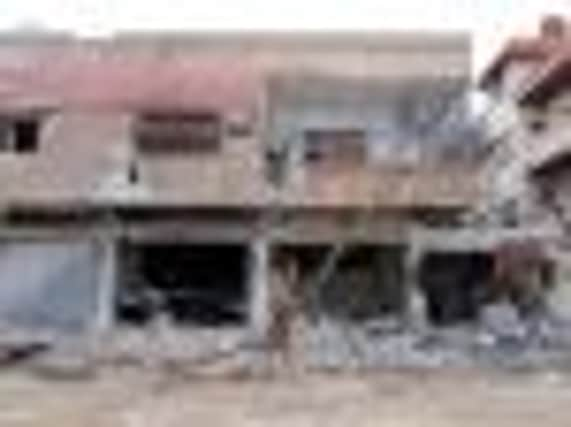Shells rain down on Homs ‘at rate of one every five minutes’


Since the cease-fire formally took effect on Thursday, president Bashar al-Assad’s military has halted random shelling and mortar attacks on rebel-held residential areas, with the exception of Homs, an opposition stronghold that has been battered by shells and mortars for more than three weeks. Before the truce, shellings were daily in many parts of Syria.
The regime has ignored other parts of UN envoy Kofi Annan’s plan, including a call to withdraw troops from towns and cities and allow peaceful protests. The regime has maintained an intimidating presence of troops, tanks and security agents in the streets and demanded that anti-government protesters seek permits.
Advertisement
Hide AdAdvertisement
Hide AdA Homs-based activist named Yazan contacted by Skype said that Thursday, the day the cease-fire went into effect, was the only quiet day.
“The shelling resumed on Friday and it has been escalating since then,” he said. “What cease-fire? There’s an explosion every five to six minutes.”
The local co-ordination committees activist network put the death toll in Homs at seven. It said the day started with a barrage of shells that fell at the rate of six each minute, shaking the district of Khaldiyeh for the second consecutive day.
The reported shelling in Homs was threatening the truce as UN observers were en route to Damascus. A spokesman for Annan said six observers were to land last night and will be “on the ground in blue helmets tomorrow.”
But on the ground in Homs it was apparent how shaky the cease-fire is in reality.
In an amateur video posted on the internet by activists, explosions and gunfire can be heard echoing as the skyline of the Khaldiyeh district is engulfed in smoke. Homs-based activists said other districts including Bayada, Jouret el-Shayah, Qarabees and Qusour were also being bombarded.
“If you saw Homs right now, you wouldn’t recognise it,” said Yazan, describing rubble-strewn roads. “You walk around, and it’s not unusual to find dead people in cars on the street,” he said, giving only his first name for fear of retribution.
The British-based Syrian Observatory for Human Rights, which relies on a network of activists on the ground, received reports of ten deaths yesterday. This included three people killed in shelling in Homs and a man killed in a shooting attack on a car in Damascus.